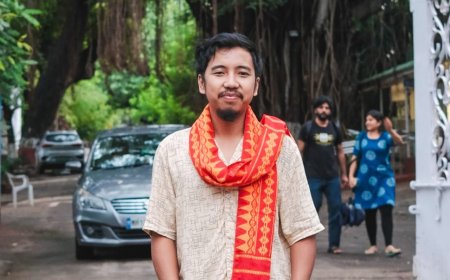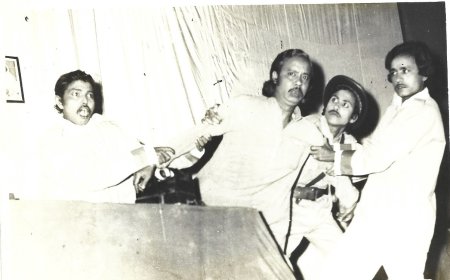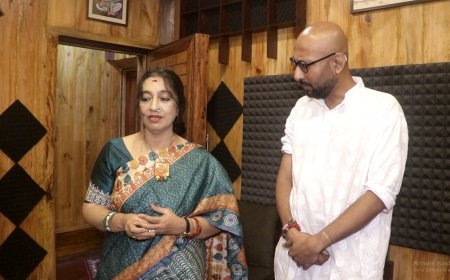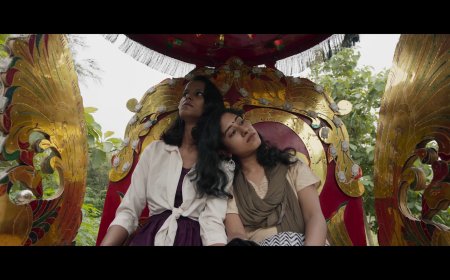Ranjan Ghosh on his New Film 'Mahishasur Marddini'
Shoma A. Chatterji writes, 'His new film 'Mahishasur Marddini' running in the theatres right now, experiments with the form of cinema to present a content that defines a scathing attack on patriarchy and its tackling of women.'
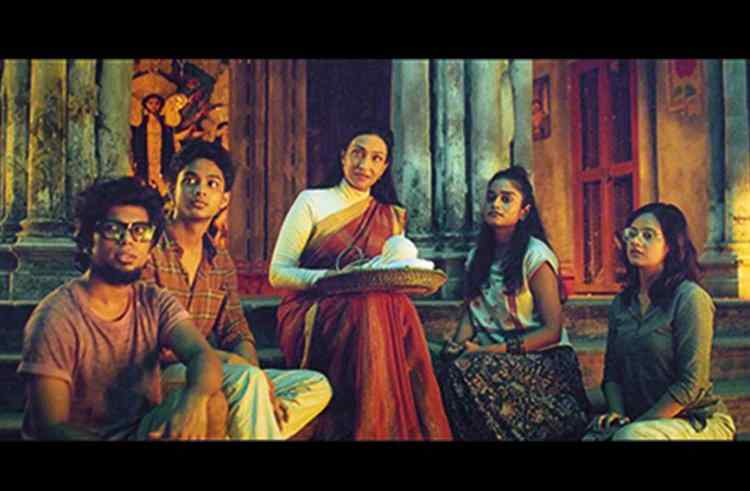
Ranjan Ghosh is relatively young within the roster of Bengali directors in contemporary Bengali cinema. He has made four films. Each one is distinctly different from the other. If his directorial debut Hrid Majharey presented his own, contemporary interpretation of a Shakespearean tragedy that is now part of the Shakepeare syllabi in universities abroad, his second film Ahaare deals with a socio-psychological-cultural impact of food and cooking on human relationships. The third film Rong Beronger Kodi was a lovely anthology of four short stories exploring how money plays different roles in different circumstances for different people. His new film Mahishasur Marddini running in the theatres right now, experiments with the form of cinema to present a content that defines a scathing attack on patriarchy and its tackling of women. The very articulate and well-read Ranjan talks about this film his peers are raving about.
What triggered the idea of the content for the film pegged to the Durga Pooja on the evening before Bodhon?
Ranjan Ghosh: I was traumatised by the Nirbhaya incident. I realized that though we worship Durga as Shakti and make such a pompous show of the Durga puja, the condition of the real-life girl child and the woman is deplorable. Whether at home, or in the outside world, she faces ignominy and discrimination. This is done by men and women alike. We all are a part of the patriarchal system. Patriarchy tells you to worship Durga as Shakti, but eventually tags her as someone's wife and 'property'. Her own identity gets shadowed under the identity of a male God - Shiva. I wanted to explore intersectionality between religion, caste, class and social status in the form of a play through the frame of cinema.
What made you decide on the casting?
Ranjan Ghosh: While writing the story, I could vividly see Rituparna Sengupta as the landlady. Her height, bone-structure, facial features, and general personality have an interesting dichotomy of power and vulnerability. She was a natural choice. We have a good comfort level at work. For the characters of the politician and the election strategist, one visualized Saswata Chatterjee and Parambrata Chattopadhyay. It was very organic, I did not have to discuss this with anyone. For the roles of the four college-going students, I did extensive auditions. Every character you see in the film apart from the leads theatre actors chosen through personal addiction. The discipline and commitment of the actors from theatre is something to imbibe. They are incredible!
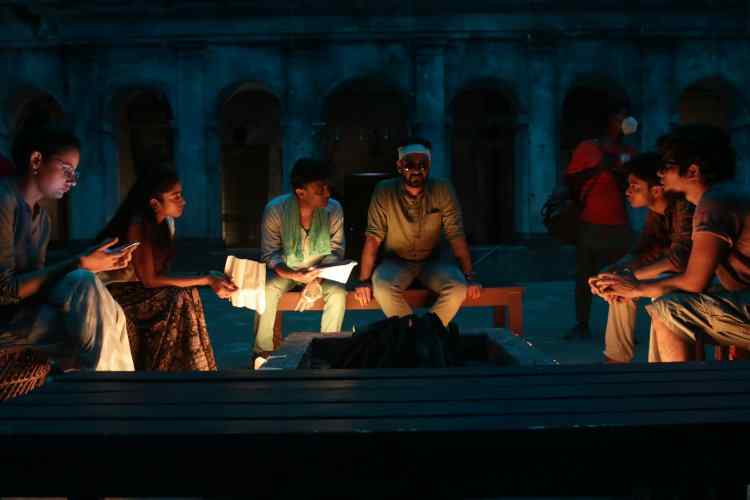
Image: Film Still
How would you box the film in a particular genre - a social film? A film with a woman-centered agenda?
Ranjan Ghosh: A social film, yes, but also a political one. I would like to think of it as an agitprop film. And the agenda here is obviously woman-centric. But more humanist in its approach than being overtly feminist. I think the present agenda should really be woman-centric. Everyday the newspapers throw up news of atrocities on women the world over, in my city, in my country. A girl child or a woman in distress is actually humanity in peril. Men and women are equal. Why is such a simple thing still not understood by society? We need to keep making films to hammer home this point.
You have experimented with the form of your film by presenting it as a play being staged in front of an imaginary audience which ends when the film does. Can this be interpreted as a surrealistic expression of reality for the audience?
Ranjan Ghosh: Yes, it is indeed a surrealistic expression of reality. The film tries to capture the essence of our mythologies - from the time when Devi Yogmaya was sacrificed to save the life of little Sri Krishna. Our epics have tonnes of such references - be it Sita, Ahalya, Surpanakha, or Draupadi. Our literature has Shakuntala forgotten by her husband King Dushyanta. So, one has tried to look at all of this through the prism of time. We know what is there in our epics, we know what all has happened in the distant and not-so-distant past, and we witness in this film what is happening in the present time and space. I was shocked that nothing much has changed. Yes, there has been improvement, but much remains to be done.
There have been films, plays, etc, on each such topic, with the focus intact. I wanted to bring them under one umbrella, and take a look at the enormity of the situation. If you watch the film closely, it touches upon various such topics but doesn't offer answers. For the solution and the answers, we have to look within and introspect. Why do such atrocities still exist? Who or what is responsible? The film is a reminder of the intersectionality of these atrocities across various strata of society.
Would you call this a character-driven film, a story-driven film or a combination of both? Or neither?
Ranjan Ghosh: I would call this a moment-driven film. There is a story, a narrative even, but it is not plot-driven or character-driven. I have consciously moved away from these often-used tools. The sole job of cinema cannot be to tell only mechanical plot-driven 'stories'. The film form is so powerful that it should be used to explore emotions and ideas in newer ways. With 'Mahishasur Marddini', I have resorted to moment-building. There are seven odd acts in the film. Each act holds a mirror to the audience, to all of us. We can see ourselves in that mirror.
How did you direct as you have a combination of top actors, middle-level actors and complete newbies?
Ranjan Ghosh: I don't overdirect, I just guide them gently. I do proper character-briefing, and that helps a lot. The deep character, outer characteristics, fatal flaws, mannerisms and habits, thoughts and subsequent actions - I discuss with them as much as I can. We go through a process of preparation, but not a rehearsal. In this film, we had a heady mix of star-actors and absolute newbies, but everyone was so deeply involved in the script and in the shooting process that it became a cake-walk. Ritudi-Saswata-Parambrata were so welcoming that the newbies or the middle-level actors jelled excellently with them, and the outcome was excellent.
Where was the film shot and how long did the shooting take?
Ranjan Ghosh: It was shot in Chinsura in Hooghly district, at a virgin location, in two schedules over fifteen days. My cinematographer Subhadeep Dey and I had spent 25 days before the shoot to do a detailed shot-breakdown, right down to the lenses. Our main challenge was to overcome the limitation of space, since it was a single courtyard. Our editor Amit Pal was also an integral part of this process.
How much liberty do you give to your actors?
Ranjan Ghosh: I give them full liberty on the sets, since I have prepared them beforehand. Before every shot, I do a camera rehearsal, and whatever corrections need to be done are implemented. I don't overdirect, but neither do I let them go unchecked.
Let us hear of the festivals the film has been screened at and the response?
Ranjan Ghosh: The response has been rather good at the India Habitat Centre Theatre Festival in September. They screened a feature film for the first time in the twenty years of their fest. I was skeptical how the theatre audience would react. But, they were very kind and welcoming. Earlier, we had received the Best Screenplay nomination at the New York Indian Film Festival in May, and the Best Film nomination in the Asian Cinema Competition section of the Bengaluru International Film Festival in March. At both the fests, the critics and the audience alike loved the content and the experimentation with form and style. The film was Mahishasur Marddini which was invited to Jamia Millia Islamia University in September, just before the Durga Puja. They had screened it for their students and had archived the film and the screenplay in their library. Now, the School of Arts and Aesthetics, JNU, after having watched the film, has invited us to screen it for the students of the Cinema Studies department. This has reinforced my faith in the fact that cinema is a powerful tool to explore ideas in newer forms, and not just a pen to tell stories. I am glad that Mahishasur Marddini is living up to the expectation that the camera is not just for capturing beautiful visuals, but is also a pen that writes letters of apology or a brush that makes bold strokes on art posters of protest.
***
About the author: Dr. Shoma A. Chatterji is an Indian film scholar and author based in Kolkata.
What's Your Reaction?




































